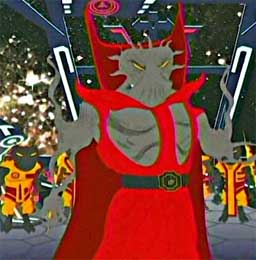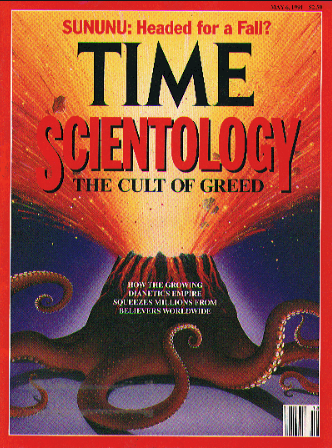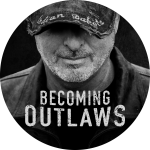
Lafayette Ronald Hubbard, commonly known as L. Ron Hubbard, was a prolific American author, best known as the founder of the controversial Church of Scientology. Born in 1911, Hubbard’s eclectic life spanned various roles, including his successful career as a science fiction author. This article delves into the origins of his Scientology, the motivations behind creating a religion, the practices of the Church, and the accusations against it.

The Science Fiction Origins
Hubbard’s foray into science fiction began in the 1930s when he regularly contributed to pulp fiction magazines. Over the years, he wrote hundreds of stories across multiple genres, including westerns, mysteries, and adventures. However, it was his science fiction works that garnered the most attention.
His most famous science fiction work, “Dianetics: The Modern Science of Mental Health,” was published in 1950. This self-help book laid the foundation for Scientology, as it introduced the concept of “auditing” – a process through which individuals could alleviate their psychological issues by confronting past traumas. This idea would later become a central tenet of the Church of Scientology.
Motivations for Creating a Religion
The exact motivations behind Hubbard’s decision to create a religion remain debated. Critics argue that his primary motivation was financial gain, as evidenced by his statement to fellow science fiction author Lloyd Eshbach: “I’d like to start a religion. That’s where the money is.” Others maintain that Hubbard genuinely believed in the principles he put forth and sought to provide a path to spiritual enlightenment.

The Church of Scientology
Established in 1953, the Church of Scientology started as an extension of Dianetics. As the organization grew, it developed a more intricate belief system and practices, drawing inspiration from Eastern philosophies and other religious traditions. The central tenet of Scientology is that humans are essentially spiritual beings called “thetans,” which have lived through multiple past lives and will continue to exist in future ones.
The church promotes the idea of self-improvement through a series of courses and auditing sessions. Auditing involves a process where an individual, under the guidance of an “auditor,” uses an “E-meter” – a device that measures the body’s electrical resistance – to identify and address past traumas or “engrams.” By confronting and overcoming these engrams, Scientologists believe they can achieve spiritual enlightenment and become “clear.
The Hidden Beliefs of Scientology: Thetans, Xenu, and Volcanoes
Scientology has a hierarchical structure for its teachings, which are revealed gradually as a member progresses through various levels of spiritual attainment. The church’s more esoteric beliefs, including those related to thetans, the galactic overlord Xenu, and volcanoes, are only disclosed to members who have reached the organization’s upper echelons, specifically the Operating Thetan (OT) levels.
Thetans
The concept of thetans is fundamental to Scientology. Thetans are considered immortal spiritual beings that inhabit human bodies. According to Scientology doctrine, every individual is a thetan, which has lived through multiple past lives and will continue to exist in future ones. The main goal of Scientology is to help individuals realize their true nature as thetans and achieve spiritual freedom by erasing the negative effects of past traumas, called engrams, through the process of auditing.

The Xenu Story
One of Scientology’s most secretive and controversial aspects is the story of Xenu, which is revealed to members only upon reaching the OT III (Operating Thetan Level Three) stage. According to the church’s teachings, Xenu was an intergalactic dictator who, 75 million years ago, brought billions of his subjects to Earth (then known as Teegeeack) and placed them near several volcanoes. He then detonated hydrogen bombs in these volcanoes, killing the beings but leaving their thetans to wander the planet.
These disembodied thetans, known as “body thetans,” are said to attach themselves to humans, causing spiritual and psychological harm. The primary goal of OT III and subsequent levels is to free oneself from the influence of these body thetans, thus achieving greater spiritual freedom and power.
The story of Xenu is often viewed by critics as evidence of Scientology’s science fiction origins, given L. Ron Hubbard’s background as a science fiction writer. However, the church maintains that these advanced teachings are a critical part of spiritual development and should only be revealed to those prepared to understand and integrate them into their personal spiritual journey.
Volcanoes and Symbolism
The use of volcanoes in the Xenu narrative plays an essential role in Scientology’s esoteric beliefs. The imagery of volcanoes is deeply symbolic, representing the cataclysmic events that led to the current spiritual state of humanity. This symbolism has also appeared in Scientology promotional materials, most notably on the cover of the book “Dianetics,” which features an erupting volcano.
The secrecy surrounding these advanced teachings is a hallmark of Scientology. The church asserts that revealing these beliefs to unprepared individuals can cause severe psychological and spiritual harm. As a result, the Xenu story, the role of thetans, and the significance of volcanoes remain closely guarded secrets, accessible only to those who have devoted significant time, effort, and resources to their ascent within the church hierarchy.
Controversies and Accusations
The Church of Scientology has faced numerous controversies and accusations throughout its history. Some of the most prominent criticisms include:
Financial exploitation: Critics argue that the church’s primary goal is to amass wealth by exploiting its members. They point to the high costs associated with courses, auditing sessions, and other services and the aggressive tactics used to pressure members into donating money.
Abuse and mistreatment: Former members have come forward with stories of physical and psychological abuse within the church. Some have alleged that they were forced into manual labor, experienced isolation, and endured sleep deprivation as part of the church’s disciplinary practices. These accounts have fueled ongoing concerns about the organization’s members’ welfare.
Suppression of dissent: The Church of Scientology has been accused of aggressively targeting its internal and external critics. This has included legal action, harassment, and surveillance of former members who have spoken out against the church and journalists, and other public figures who have criticized the organization.
Manipulation and control: Critics argue that the church employs manipulative tactics to control its members, including using personal information gathered during auditing sessions to influence and maintain loyalty. The church’s disconnection policy, which encourages members to cut ties with those deemed “suppressive,” has also been criticized for breaking up families and friendships.
The Sea Organization: Life Aboard the Apollo
In the late 1960s, L. Ron Hubbard faced mounting legal and financial challenges, including investigations by the Internal Revenue Service (IRS) in the United States. To escape these pressures, he established the Sea Organization (Sea Org) in 1967, a paramilitary group within the Church of Scientology. Hubbard and a select group of dedicated followers set sail on a fleet of ships, with the flagship Apollo being the center of operations.
Life Aboard the Apollo
The Sea Org was initially formed with the goal of furthering Scientology’s expansion and conducting advanced spiritual research. However, life aboard the Apollo also provided Hubbard with a means to avoid the scrutiny of law enforcement agencies and tax authorities, including the IRS.

Hubbard appointed himself as the “Commodore” of the Sea Org and instituted a strict hierarchy and code of conduct for its members. The crew adhered to a rigorous schedule and were subjected to harsh discipline for perceived infractions. Living conditions on the ship were often cramped and austere, with limited access to resources.

“Overboarding” and Harsh Punishments
One of the most notorious practices aboard the Apollo was the act of “overboarding,” where crew members who had committed perceived wrongdoings or failed to meet Hubbard’s expectations were thrown overboard, sometimes blindfolded and with their hands and feet bound. The intention was not to cause physical harm but to instill fear and maintain strict discipline among the crew. Overboarding was just one of the many punitive measures that Hubbard and the Sea Org leadership employed to keep followers in line.
Other forms of punishment included being assigned to the “Rehabilitation Project Force” (RPF), a program designed for Sea Org members who had fallen out of favor or violated the group’s codes. RPF members were subjected to long hours of manual labor, isolation, and a reduced diet, all while still being expected to participate in auditing and other Scientology practices.
Life After the Apollo
The fleet of Sea Org ships, led by the Apollo, roamed the Mediterranean and Atlantic for almost a decade. During this time, Hubbard and his crew faced multiple challenges, including being expelled from various ports due to their controversial activities and the negative publicity surrounding Scientology. In 1975, Hubbard and the Sea Org decided to disband the fleet and move their operations back to land, eventually establishing their new headquarters in Clearwater, Florida, under the name “Flag Land Base.”
Legacy of the Sea Organization
The Sea Organization’s time aboard the Apollo remains one of the most controversial chapters in the history of Scientology. Critics argue that this period highlights Hubbard’s extreme control and abuse over his followers. Despite the end of Apollo’s voyage, the Sea Org continues to exist within the Church of Scientology, serving as its most dedicated and elite group of members who pledge their lives to advance the church and its doctrines.

The Death of L. Ron Hubbard
In the years leading up to his death, L. Ron Hubbard had become increasingly reclusive, living in seclusion at his ranch in Creston, California. This retreat from public life fueled speculation about his health and whereabouts. When he passed away, the official cause of death was listed as a stroke, though some have suggested that other factors, including the long-term effects of drug use, may have contributed to his decline.
The Church of Scientology’s Response
Upon learning of Hubbard’s death, the Church of Scientology initially kept the news private, allowing time to devise a strategy for communicating the event to its followers. The organization’s leadership, led by David Miscavige, framed Hubbard’s passing as a voluntary and intentional decision rather than an involuntary consequence of declining health.
According to the church’s narrative, Hubbard had purposefully “dropped his body” to continue his spiritual research in a non-corporeal state, free from the physical world’s limitations. This explanation aligned with Scientology’s belief in the immortal nature of the thetan, or spiritual being, which transcends the confines of the material body and can exist independently. By portraying Hubbard’s death in this manner, the church sought to maintain continuity in the faith and reassure followers that Hubbard’s work would continue, even in his absence.
The announcement of Hubbard’s death was made at a gathering of high-ranking Scientologists at the Hollywood Palladium on January 27, 1986. During the event, David Miscavige declared that Hubbard had “willingly and knowingly” discarded his body to conduct research in a new, higher level of spiritual existence. This message was later disseminated to the broader Scientology community through internal publications and meetings.

Impact on the Church of Scientology
Despite the church’s efforts to present Hubbard’s death as a planned and controlled event, his passing inevitably led to transition and uncertainty within the organization. David Miscavige, a close associate of Hubbard, emerged as the new leader of the Church of Scientology, consolidating power and instituting various changes to the church’s structure and operations.
Final Words
There is no public record of L. Ron Hubbard’s exact final words, as he was living in seclusion at his ranch in Creston, California, during his final years. His communication with the outside world, including his followers and the Church of Scientology, was limited then.
However, in a farewell message addressed to his followers, which was read at the event announcing his passing, Hubbard wrote, “I have completed that portion of my work that can be done in the physical universe, and it is now time to move on to the next phase of my research.” This message was intended to convey the idea that Hubbard had willingly “dropped his body” to continue his spiritual research and discoveries in a non-corporeal state, free from the limitations of the physical world.
It is important to note that the exact circumstances surrounding his death and the period leading up to it remain subject to speculation. Much of the information comes from the Church of Scientology, which is interested in maintaining a particular narrative about Hubbard’s life and legacy.
Former Sea Org member and the head of the Scientology Celebrity Center, Amy Scobee, shares her story on an episode of the Becoming Outlaws podcast.


Amy Scobee says
Thank you for having me on your show, Ken. The more exposure of Scientology and their mind-controlling abusive practices, the better! May God bless you greatly!
Ken McMullen says
My pleasure. You are welcome back on anytime.